
Joseph Henderson was a 19th-century American harbor pilot who guided large vessels into and out of New York Harbor as a Sandy Hook pilot. During his long career his work included bringing the ship that carried the Statue of Liberty safely into port after its trip from Europe.
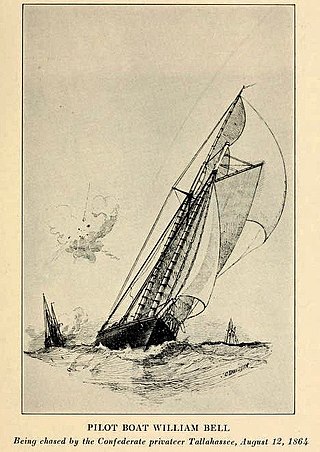
The William Bell was a pilot boat built in 1864 by shipbuilder Edward F. Williams at Greenpoint, Brooklyn for a group Sandy Hook Pilots. She was captured and burned by the Confederate raiding steamer CSS Tallahassee during the American Civil War. A second William Bell was constructed in 1864-1865 to replace the first one.
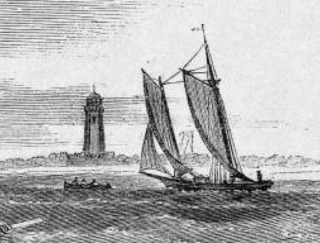
The Ellwood Walter, No. 7 was a 19th-century Sandy Hook pilot boat built in 1853 by Edward F. Williams at Greenpoint, Brooklyn to replace the pilot boat Yankee, which was lost in December 1852. The schooner was used to pilot vessels to and from the Port of New York. She was replaced by the Edmund Driggs, No. 7, in 1864.

The Isaac Webb was a 19th-century Sandy Hook pilot boat built in 1860 by Webb & Bell for the New York and Sandy Hook pilots. She received a reward by the Board of Pilot Commissioners of New York for saving three sailors from the wreck of the bark Sarah, that was caught up in a hurricane. The Webb was shipwrecked in a dense fog at Quonochontaug Beach, Long Island in 1879. She was replaced by pilot boat Columbia.

James Funk was a 19th-century New York City pilot boat built in 1862 at Greenpoint, Brooklyn for a company of New York Pilots. She was built for speed. She was assigned the "Number 22," which was displayed on her mainsail. The James Funk was captured and burned by the Confederate raiding steamer CSS Tallahassee during the American Civil War. The Charlotte Webb was built in 1865 to take the place of the James Funk that was destroyed.

The Washington was a 19th-century Sandy Hook pilot boat built in 1845 by C. & R. Poillon for New York Pilots. She was rebuilt several times, the last with the sail number "22" painted on her mainsail. In 1884, she was sunk by the German steamship Roma, and then replaced by a new Washington.

The Caldwell H. Colt was a 19th-century Sandy Hook pilot boat, built in 1887, at the Samuel H. Pine's shipyard in Greenpoint, Brooklyn, for a group of New York Pilots. She was one of the pilot-boats that was in the Great Blizzard of 1888, that was one of the most severe blizzards in American history. In 1903, she was sold to a group of Pensacola, Florida pilots.

The Charles H. Marshall was a 19th-century Sandy Hook pilot boat built by Henry Steers in 1860 for a group of New York pilots. She was in the Great Blizzard of 1888, the same year the National Geographic came out with an article about the successful struggle made by the crew of the Marshall. The boat was named in honor of the American businessman Charles Henry Marshall. In the age of steam she was sold in 1896.

The Edward F. Williams was a 19th-century Sandy Hook pilot boat, built in 1863 at the Edward F. Williams shipyard in Greenpoint, Brooklyn for a group of New York Pilots. She survived the Great Blizzard of 1888. In the age of steam, the Williams was sold in 1896.

The Mary A. Williams was a 19th-century Sandy Hook pilot boat, built in 1861 by the shipbuilder Edward F. Williams in Greenpoint, Brooklyn, for a group of New York pilots. She was named Mary Ann Williams after the wife of the builder. The boat was considered one of the finest connected with the pilot service. She survived the Great Blizzard of 1888. In the age of steam, the Mary A. Williams was sold in 1896.
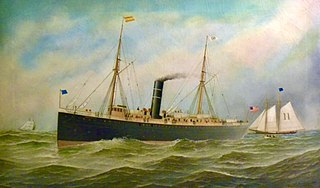
The Ezra Nye was a 19th-century pilot boat, built in 1859 by the Wells & Webb shipyard in Greenpoint, Brooklyn for a group of New Jersey and Sandy Hook Pilots. She was one of the pilot-boats that was in the Great Blizzard of 1888, that was one of the most severe blizzards in American history. In 1896, in the age of steam, the Ezra Nye along with other pilot boats, were replaced with steamboats.
The Mary Ann, No. 13 was a 19th-century Sandy Hook pilot boat built for the New York pilots. She helped transport maritime pilots between inbound or outbound ships coming into the New York Harbor. In 1860, the Mary Ann, was one of only twenty-one pilot boats in the New York and New Jersey fleet. She went ashore outside Sandy Hook in 1863.

The Nettle was a 19th-century Sandy Hook pilot boat built in 1844 by S. Hall of East Boston, Massachusetts for the New York Pilots. She helped transport maritime pilots between inbound or outbound ships coming into the New York Harbor. In 1868, she found the wreck of the bark Henry Trowbridge, and towed her to Sandy Hook. The Nettle, sank in 1876 in the Pensacola Bay. The sunken wreck was removed in 1878 to improve the Pensacola harbor.

Edmund Blunt was a 19th-century New York pilot boat built in 1858 by Edward F. Williams for the New York Pilots. She helped transport New York City maritime pilots between inbound or outbound ships coming into the New York Harbor. She survived the Great Blizzard of 1888. In the age of steam, the Blunt along with other pilot boats, were replaced with steamboats. She was built to replace the Jacob L. Westervelt, which sank in 1857.

The Mary E. Fish was a 19th-century Sandy Hook pilot boat, built at the Edward F. Williams shipyard of Greenpoint, Brooklyn in 1861 for Richard Brown and the New York Pilots. She was built to replace the Mary Taylor. The Fish was hit and sank by the schooner Frank Harrington in 1885 and replaced by the David Carll.

Charlotte Webb was a 19th-century New York City pilot boat built in 1865 at the Webb & Bell shipyard to take the place of the James Funk, that was destroyed by the rebel Tallahassee during the Civil War. She survived the Great Blizzard of 1888, but was run down by the French steamship La Normandie in 1889. She was replaced by the pilot boat George H. Warren.
The A. T. Stewart was a 19th-century Sandy Hook pilot boat built in 1865 at the Edward F. Williams shipyard to replace the pilot boat George Steers, which was lost in 1865. She was built for the New Jersey and New York Sandy Hook Pilots Association. The Stewart was in a collision with the steamship Scotia and sank in 1869. She was replaced by the James Gordon Bennett in 1870.
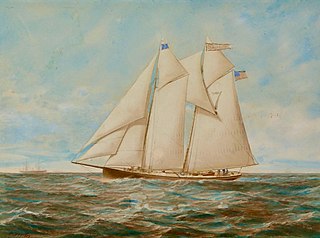
The Edmund Driggs was a 19th-century Sandy Hook pilot boat built in 1864 at the Edward F. Williams shipyard in Greenpoint, Brooklyn. She was built to replace the pilot boat Elwood Walter. The schooner was used to pilot vessels to and from the Port of New York. She survived the Great Blizzard of 1888. In the age of steam, she was sold in 1896.
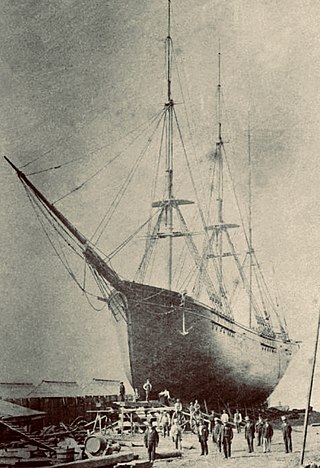
Edward Francis Williams, was a 19th-century shipbuilder. He apprenticed under his father Jabez Williams. Edward F. Williams built his own shipyard, building clipper ships and eleven Sandy Hook pilot boats, some of the finest boats in the fleet. He was the first president of the Greenpoint Savings Bank. Williams died in New Providence, New Jersey, in 1902.
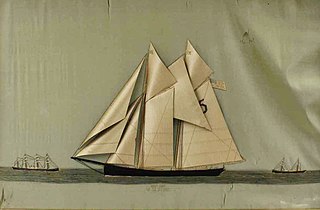
W. W. Story was a 19th-century New Jersey pilot boat built in 1874 at the Samuel H. Pine shipyard in Greenpoint, New York. She sank off Sandy Hook horseshoe during the Blizzard of 1888. She was raised and turned into a fishing smack. On November 13, 1896, she was reported missing along with her crew after being last seen along Absecon, New Jersey when she was caught up in a hurricane.



















